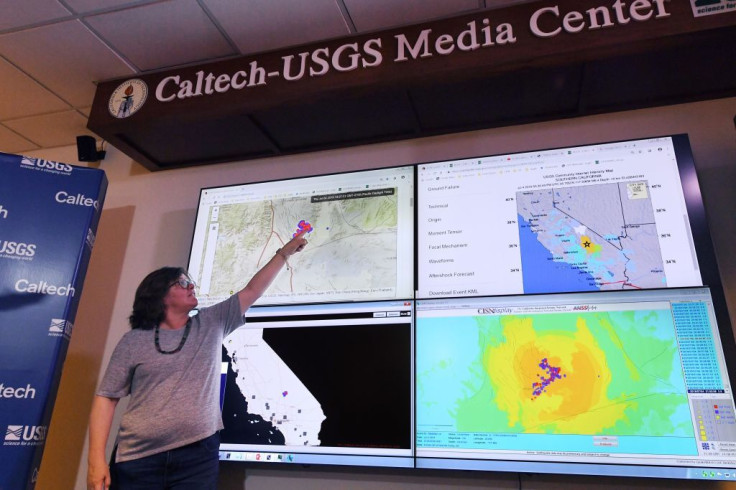California Will 'Absolutely' Have Devastating Earthquake In Future, With Thousands Of Deaths

KEY POINTS
- A Caltech research associate said California has faults that could produce massive earthquakes
- A USGS geophysicist warned that the San Andreas fault is capable of generating a magnitude 7.8 earthquake
- A 6.4-magnitude earthquake shook parts of California in December 2022, causing two deaths
Scientists have warned that California could experience a major earthquake as destructive as the magnitude 7.8 quake that hit Turkey and Syria Monday.
Lucy Jones, a research associate at the California Institute of Technology, told the Los Angeles Times that California has faults that could produce earthquakes as large and destructive as the Monday quake, which has thus far killed more than 4,300 people and left thousands of others injured.
"There will be 7.8s in our future. Absolutely. We have the faults, we've seen it in the past, it will happen again," the seismologist said.
"The timing of them, as far as we can tell, is random. And there's no way to say when it's going to be happening. ... Compared to the long-term average, we've been quiet for a while," she added.
Kate Scharer, a research geophysicist at the U.S. Geological Survey (USGS), echoed Jones' remarks, saying that the San Andreas fault is capable of creating devastating earthquakes, based on historical data.
"We've had 7.8 earthquakes in our historic past. We've had a great run without them, but it's important to be prepared for these possibilities in the future," Scharer said.
A simulation conducted by USGS revealed that a potential magnitude 7.8 earthquake in Southern California could cause nearly 1,800 deaths and 50,000 injuries while cutting fuel, power and water utilities.
Another simulation showed that if the Hayward fault in Northern California causes a magnitude 7 tremor, there would be at least 800 deaths and widespread fires.
A magnitude 7.5 quake on the Puente Hills fault, which runs through Los Angeles and Orange counties, could also cause devastating casualties, killing between 3,000 and 18,000 people, according to the geological agency.
California is no stranger to earthquakes as it sits on an area around the Pacific Ocean known as the Ring of Fire, a region where many volcanic eruptions and earthquakes occur.
In 1906, a magnitude 7.9 tremor shook San Francisco, resulting in more than 3,000 deaths and the destruction of the whole city due to raging fires.
The 1906 San Francisco earthquake became widely known as one of the worst and deadliest earthquakes in U.S. history and the greatest loss of life from a natural disaster in California's history.
In December 2022, a magnitude 6.4 quake struck Northern California, killing at least two people and affecting the electricity in the region.
NBC News reported that two elderly people died after emergency responders failed to get them to medical facilities in time.
About 30,000 homes and establishments experienced power interruption due to the earthquake.
These past earthquakes pushed California to enact policies to shore up the capabilities of buildings to withstand strong tremors and prevent loss of life.
In 1975, California passed the Seismic Safety Act, which established the state's Seismic Safety Commission to advise state officials on reducing potential risks from geological events.
In 2015, Los Angeles enacted the most sweeping earthquake retrofit regulations, requiring about 14,000 structures to be retrofitted to withstand strong earthquakes, CNN reported.

© Copyright IBTimes 2025. All rights reserved.






















